Best gas grills – the best propane and natural gas grills, tested by experts
Appliance experts reveal the best gas grills on the market
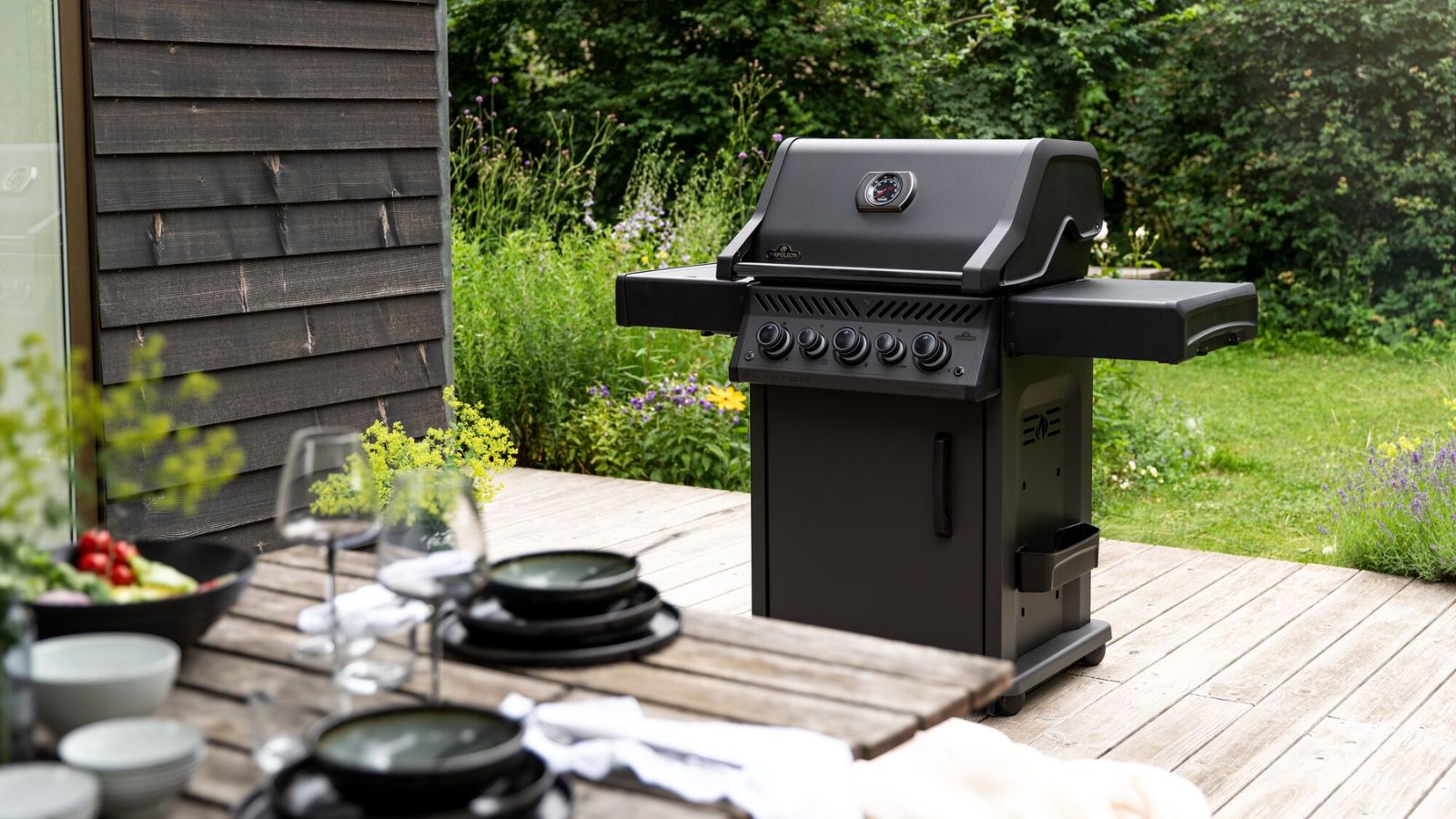

Gas grills make it easy to cook in the comfort of your own backyard. Whether you want mouth-watering steaks or tasty vegetable skewers, a gas grill is a garden essential.
Unlike charcoal or pellet grills, the best gas grills are simple and quick to use. The quick ignition means you can cook delicious dishes quickly, as you don't have to waste time setting up and lighting charcoal or wood and waiting for it to reach cooking temperature. There's no learning curve or skills to master, just fast, effective cooking.
I've tested some of the best grills on the market, and plenty of these are gas grills. After putting grills through their paces on dozens of burgers, sausages, grilled chickens, corn on the cob, and much, much more, I've found the best gas grills you can buy.
The Quick List
If you want a gas grill as soon as possible, here are our top picks. We go into more detail below.
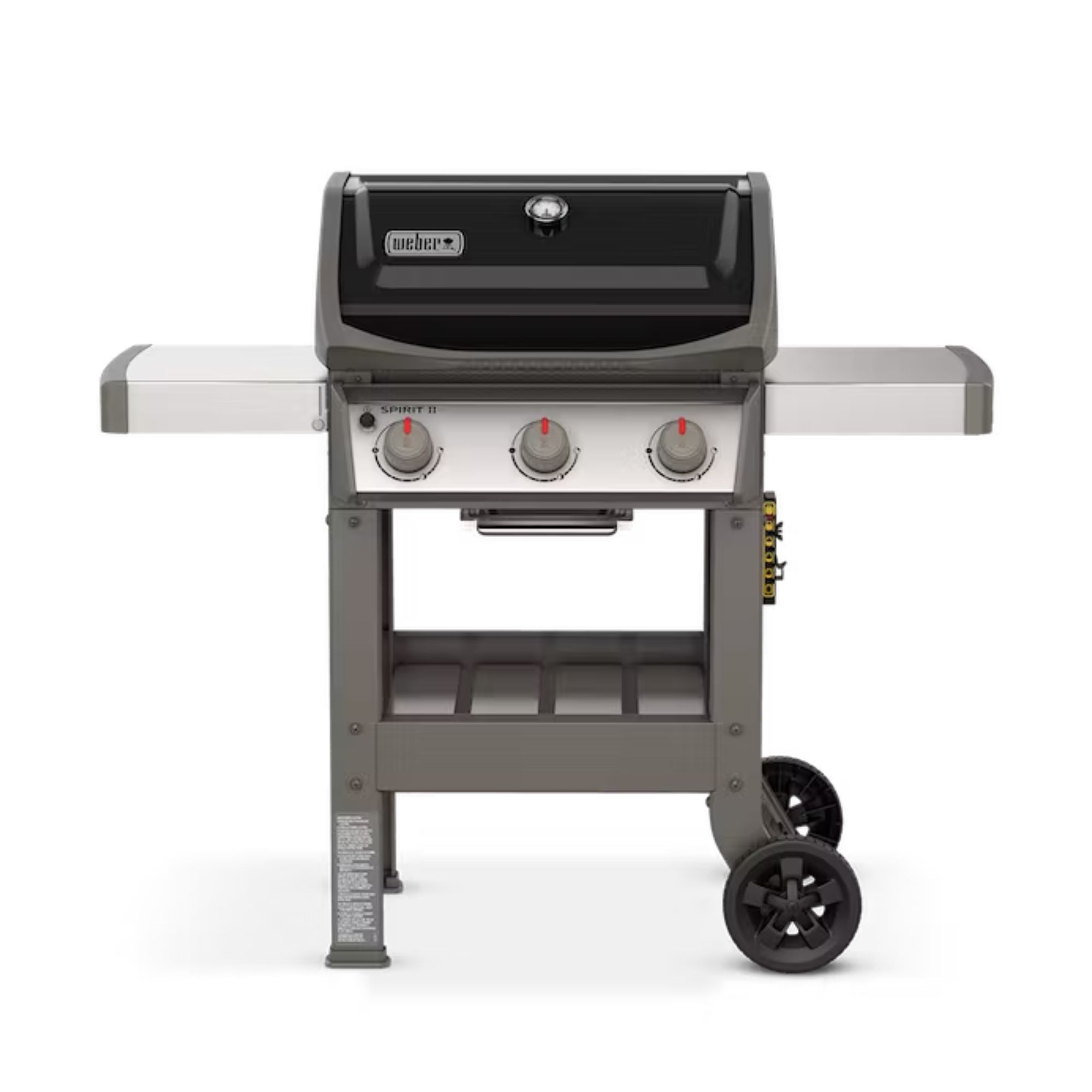
Best budget
This grill doesn't have all the bells and whistles, but it's perfect for the average outdoor cook.
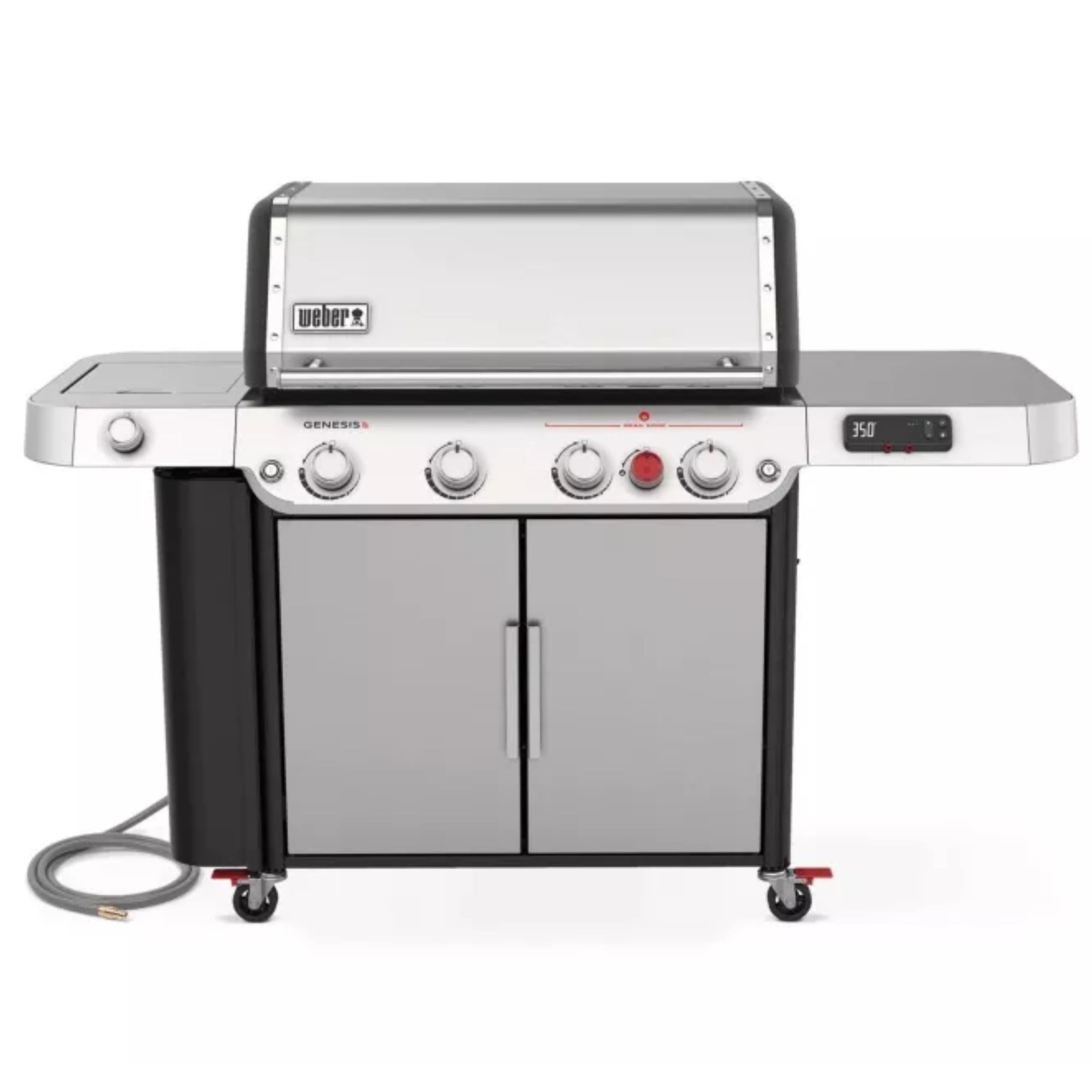
Best large
If you have big gatherings, this is the grill for you. There's nearly a thousand square inches of grilling area as well as the side burner.
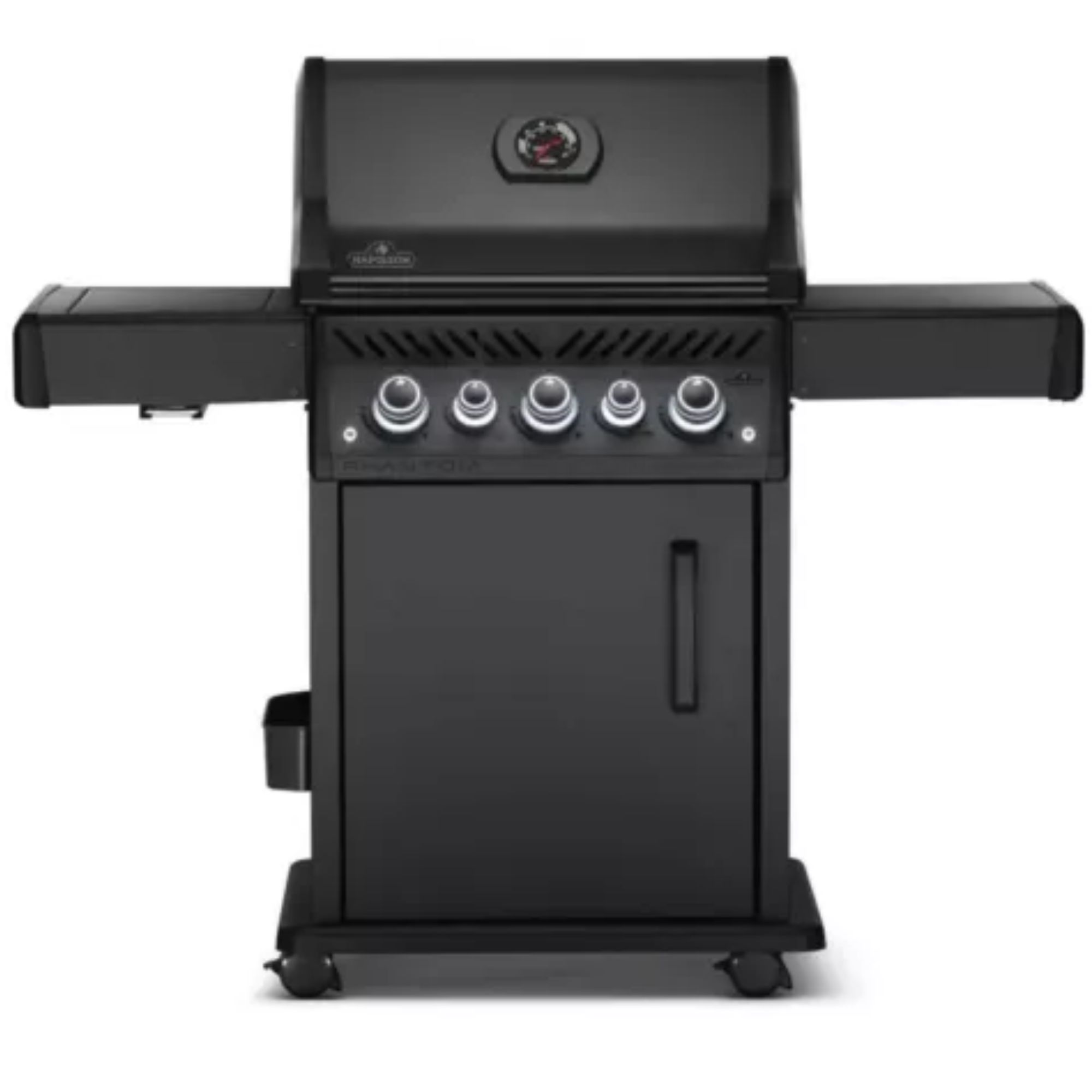
Best gas grill you can buy

1. Weber Spirit II E-310 Gas Grill
Our expert review:
Specifications
Reasons to buy
Reasons to avoid
I have a huge soft spot for this grill because it's a dream to use. There's nothing complicated to master or build, and it has a large cooking area. Most importantly, it made the best food in the latest round of testing. It made the best burgers and sausage we've tried this year, and a perfect spatchcok chicken smothered in barbecue sauce.
I think this grill is best suited to the average outdoor cook. It's simple to use and the ignition is quick and reliable. It reaches temperature in just a few minutes and it's easy to monitor thanks to a responsive thermometer. There are handy side tables with useful tool hooks, and big wheels for moving it around your yard. However, it lacks the features of top-line grills. There's no app connection or side burner, so you can't take your grilling to the next level.
The side rack for holding propane tanks is small, so 30 or 40-lb tanks will be on show. The grills are a little wide, so we lost a couple of thin-sliced vegetables through the gaps. One final issue is that the plastic knobs feel cheap, but that's a minor issue with a near-perfect grill.
Best large gas grill

Specifications
Reasons to buy
Reasons to avoid
This grill is huge. It sounds like hyperbole, but there's no way around the facts. Our tests found that this grill has nearly a thousand square inches of grilling area, and that's before you get to the side burner. In short, this capacity means that this grill can fit forty burgers. For those keeping track of the numbers, that's enough to feed a family of four ten times over. It's almost ridiculous.
Not only is it big, it delivers on performance. The sear station leaves those classic charred lines on steaks and burgers for maximum flavor. The side burner is perfect for whipping up sides and sauces, and there's also a foldable warming rack for keeping sides and finished dishes warm as you finish off something else. All of this functionality can be monitored by an app.
For such an expensive grill, it would be good to control the temperature via the app. It's so big and packed with tech that not only do you need propane, but you also need to plug it into an outlet. Unsurprisingly, it's the most expensive grill on test.
Best side burner

3. Napoleon PHANTOM ROGUE SE 425 RSIB
Our expert review:
Specifications
Reasons to buy
Reasons to avoid
The Phantom Rogue is a great choice for cooking an entire meal on one appliance. You can cook burgers, chicken, and sausages on the grill, warm corn on the cob on the warming rack - which has a dedicated burner, a unique feature in this guide - and a side burner that's ideal for searing steaks.
This infrared side burner is exceptional, reaching genuinely astonishing temperatures that are great for searing. You'll have to watch it, as you could very quickly overcook your food, but it's just right for flash-cooking vegetables. When it came to the taste test, this Napoleon grill made good burgers and a good whole chicken.
I promise I'm not whining: this grill is horrible to assemble. It took me three hours, as there were lots of steps, confusing instructions, and tricky wiring. It'll be a minor annoyance for most, but if you have mobility issues, this will be a challenge.
As a team, we aren't convinced by the aesthetics. It will dominate most patio spaces and overwhelm most garden styles. If you're proud of your patio and have achieved your dream backyard, you won't want this all-matte black grill parked in the middle. I also found that the light-up control knobs are a gimmick that doesn't offer much illumination.
Comparison table
boldHere's a comparison table of each grill's key specifications. The best result in each category is highlighted in bolt.
| Header Cell - Column 0 | Weber Spirit II E-310 | Weber Genesis SPX-435 | Napoleon Phantom Rouge |
|---|---|---|---|
Price | ~$519-$639 | $1799 | ~$1249 |
Dimensions | 27"D x 52"W x 44.5"H | 27“ D x 68.5“ W x 48.5” H | 25" D x 55" W x 48.50" H |
Cooking options | Grill, roast, warm | Grill, roast, sear, fry | Grill, roast, sear, fry, rotisserie |
Grill surface area | 529 sq. in | 994 sq. in | 710 sq.in |
Fuel | Propane | Propane, electric | Propane, batteries |
Burners | 3 | 4 | 3, plus side and rear burners |
Rating | 30000 BTU | 48000 BTU | 70500 BTU |
Materials | Porcelain-enamelled, cast-iron cooking grates, stainless steel | Stainless steel cooking grates | Stainless steel cooking gretes |
Weight | 114 lbs | 220 lbs | 154 lbs |
Power outlet | No | Yes | No |
How we test grills
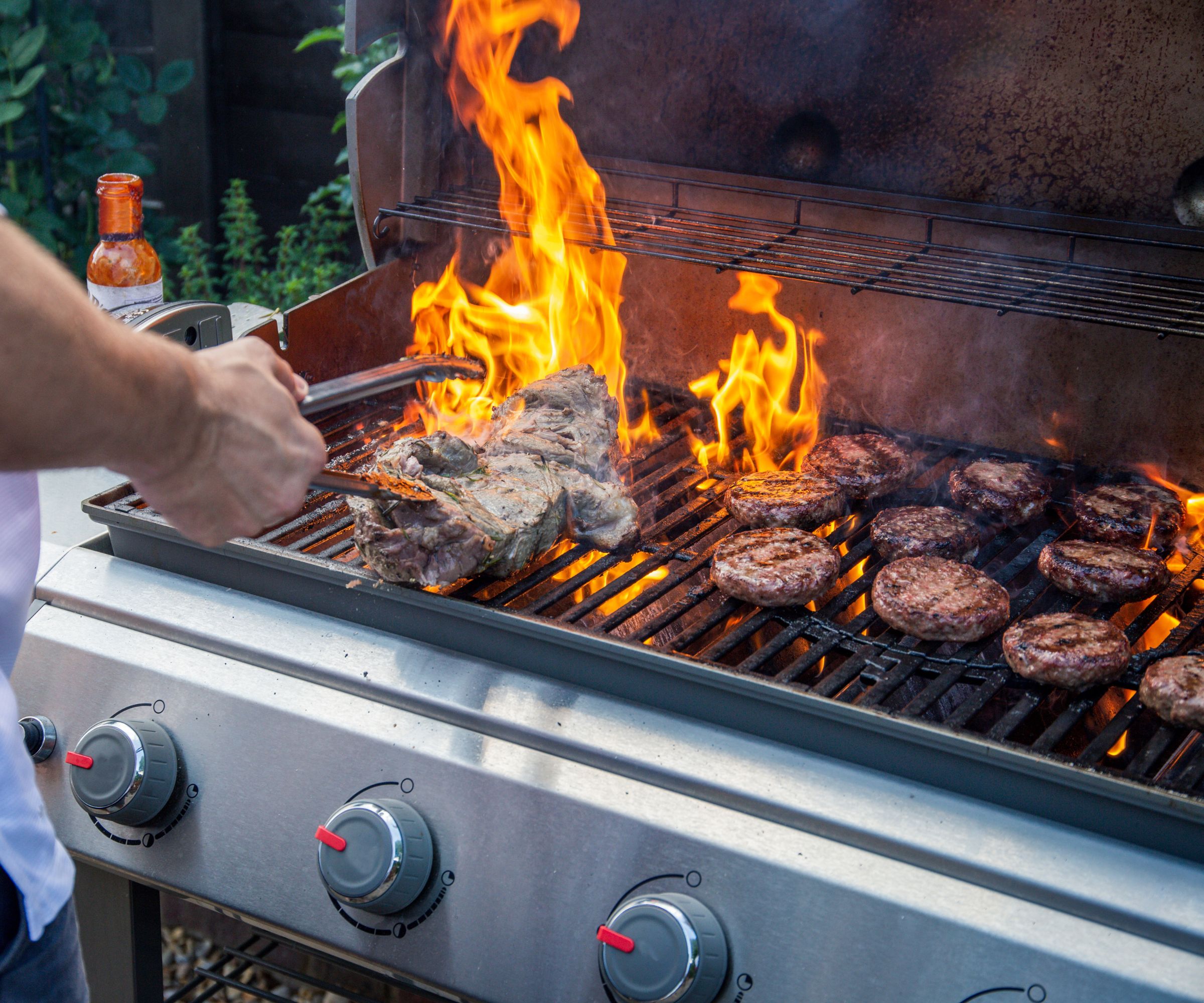
All of these grills have all been tried and reviewed by us first-hand. When testing we think about the assembly process, which can often be tricky, and we also take into account how safe and secure the grill feels during use. We cook foods that need to be seared at high temperatures, and we also cook low and slow to see how well these gas grills regulate temperature. When a grill comes with smart features, we test these too. We cook this wide variety of dishes to put the grills through the toughest tests, but we always directly compare them by cooking backyard staples like burgers, hot dogs, chicken and roast vegetables.
Our team of experts have several years experience testing grills for a wide variety of consumer publications. I have personally tested most of the grills in this guide; others were tested by the team before I joined Homes and Gardens.
For further information about how we conduct our reviews and for our product-testing process explained, explore how we test, and there's even more information specific to our grill testing process in how we test grills.
Meet our testers

Millie Fender is Head of Reviews at Homes & Gardens. Formerly our head of all things cooking, she put the Char-Broil Gas2Coal Hybrid Grill through its paces, as well as several of the other grills featured.
Millie's put lots of different grills to the test, including the Weber SmokeFire EPX6 Wood Fired Pellet Grill STEALTH Edition, which almost converted her away from the ease of gas grilling.
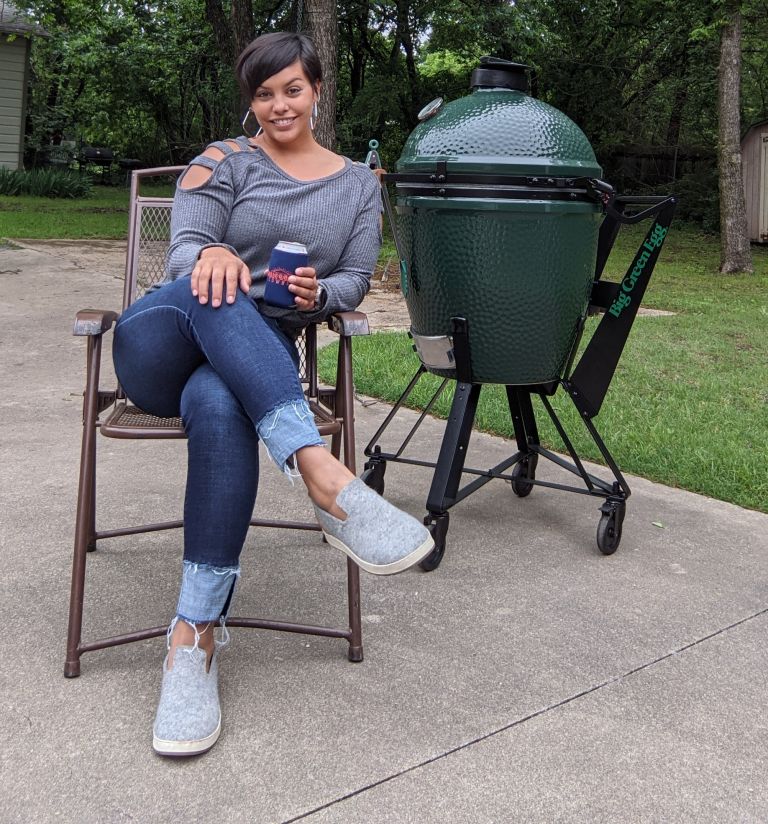
Alex Temblador is a award-winning author and freelance writer based in Dallas, Texas. With an expansive outdoor space for thorough testing, she has tested everything from hot tubs to grills for Homes & Gardens.
Alex tested the monster Weber Genesis SPX-435 Smart Gas Grill, assembling it with the help of her cousin for three hours straight. Once assembled, she was wowed by the quality cooking she was able to achieve with this large, impressive gas grill.
Gas grill FAQs
Is a gas grill better than charcoal?
Gas is easier, faster, and cleaner than charcoal grills. However, it doesn't taste as good.
For quick, clean grilling, a gas barbecue is the way to go. I love using gas grills because you don't have to think about it. Gas grills reach temperature in a few minutes, compared to at least half an hour for a charcoal grill. They don't produce smoke, which stops barbecue smells clinging to your clothes, and they don't char like charcoal grills, so they're easier to clean. Gas grills also tend to have a larger surface area, so you can cook a lot more at once, and because the temperature is easy to control and uniform across the surface of the grill, you get the same perfect result every time.
This means that a gas grill is the most efficient option if you're catering for a crowd. At the same time, because they're so quick to light, gas grills are also perfect for everyday meals. If you get home from a long day at work and you're craving a good old-fashioned hamburger, you can get grilling in minutes and make a quick, fuss-free dinner for the family.
Nevertheless, all of these benefits fall short of the flavors of a charcoal grill. With charcoal grilling, oils and fats from your ingredients drip down and vaporize on the sizzling coals, creating that delicious smoky taste. While you can mimic this by placing a little smoking wood next to one of the burners on a gas grill, it's simply not the same.
Is a gas grill better than a pellet grill?
Gas grills are simpler, faster, and cheaper. Pellet grills taste better and are more versatile.
Gas grills are much easier to use than pellet grills. You connect your gas and switch them on - it's as simple as that. Pellet grills run off with wooden pellets, which can be tricky to light until you get the hang of it. You also need to monitor the pellets as they reach temperature so they aren't too hot or cool.
The difference in fuels also means gas grills reach temperature much faster than pellet grills. Gas grills get to temperature in minutes rather than half an hour.
Pellet grills are also more expensive than gas grills. This is both because they're simply larger than most gas grills, but also because they tend to be higher tech. To make the process easier, most pellet grills are loaded with tech that can monitor the temperature and adjust the cooking and smoke automatically, but this will cost you.
However, pellet grills taste better. Gas grills can still make delicious food, but when you compare it to the smoky flavors of a pellet grill, it simply isn't as good. The flavors aren't as deep or rich.
Pellet grills are also much more versatile. Unlike gas grills, they're designed for low-and-slow cooking. Wannabe pitmasters chasing the perfect Texan brisket or Kansas City burnt ends should buy a pellet smoker, not a gas grill. For example, our expert Head of Reviews, Millie Fender, used a pellet smoker to make ribs, shawarma, steak, and a shoulder of lamb all at the same time, resulting in perfect pull-apart lamb, smoky ribs, as well as perfect steaks. When we were testing gas grills, Millie, the rest of the team and I made burgers, chicken, and grilled vegetables. Gas grills are more limited.
How many burners do I need?
Three burners are enough for a family of 4-6. You can cook up to 20 burgers on a grill this size, so anything bigger is overkill unless you're catering to a huge party. You can get away with a two-burner, but a three burner is good for slower cooking. With a three burner, you can set the two outer burners to a low temperature and switch the middle burner off for indirect heat that's perfect for roasting.
Do I need infrared burners?
Most gas grills use convection heating to cook food, which exposes food directly to fire. The problem with this type of energy is that it can dry out meats. Infrared burners, on the other hand, are designed to help meats retain their moisture, resulting in a juicier dish. This is because they use radiation heat rather than convection heat. Essentially, the fire heats ceramic or metal plates which then transfers heat evenly to the food. Infrared burners are common on side burners and less common in grills. They're a nice-to-have, but not essential. They also get so hot that they can quickly overcook food, which somewhat defeats the purpose.
What does BTU mean?
BTU stands for British Thermal Units, and it's a measure of the amount of energy required to heat a pound of water by one degree Fahrenheit. Grill retailers use it to measure the heat output and fuel consumption of a grill. The BTU rating should be relative to the surface size of the grill. This means that a quality grill should have at least 75 to 100 BTUs per square inch of the grill surface. The higher the BTU, the less efficient the grill. You should look for a grill with a low BTU rating because this will consume less fuel.
However, BTU is a very rough measurement of heat output and fuel efficiency. It can vary depending on temperature and use and doesn't apply to infrared side burners in the same way, which makes this all the more confusing. Just remember that BTUs aren’t the main consideration when you researching a good grill. There are many other factors to consider.
Do I need a side burner?
Some grills come with side burners, and while you don’t necessarily need it to grill a meal, they can come in handy for cooking side dishes and sauces in pans or searing a steak if the side burner has a grate covering. The average cook can get by without one, but they're a lifesaver for burger staples like fried onions.
How much should you spend on a gas grill?
My advice is that you should spend between $500-$700. While it completely depends on your budget, what type of grill you require (integrated, travel, freestanding), and what you want to cook, the best value for money is either side of $600.
Gas grills can cost anything between $100-$5000, so there are options if you've got a tight budget or are looking to spend big. However, in my experience, there are diminishing returns above $3000. You should also consider if gas grills are the right price point in the first place. They're more expensive than charcoal grills but cheaper than pellet grills.
Sign up to the Homes & Gardens newsletter
Design expertise in your inbox – from inspiring decorating ideas and beautiful celebrity homes to practical gardening advice and shopping round-ups.

As a gardens and lifestyle contributor, Alex makes sure readers find the right information to help them make the best purchase. Alex got his start in reviewing at the iconic Good Housekeeping Institute, testing a wide range of household products and appliances. He then moved to BBC Gardeners’ World Magazine, assessing gardening tools, machinery, and wildlife products.
- Millie FenderHead of Reviews
- Alex TembladorContributing Editor
-
 I've spent over 200 hours testing vacuums and swear by my two Dysons – this is how I properly clean a Dyson vacuum filter for longer-lasting appliances
I've spent over 200 hours testing vacuums and swear by my two Dysons – this is how I properly clean a Dyson vacuum filter for longer-lasting appliancesYour Dyson vacuum will last much longer and clean at its best
By Dan Fauzi Published
-
 Bethenny Frankel calls this $695 machine the 'Rolls-Royce Cullinan of coffee' – it's a must-have luxury buy for iced-coffee lovers this springtime
Bethenny Frankel calls this $695 machine the 'Rolls-Royce Cullinan of coffee' – it's a must-have luxury buy for iced-coffee lovers this springtimeThe Real Housewife swears by a luxurious machine that makes nitro cold brew, cold brew, and cold espresso at the touch of a button – here's why it's worth it
By Sophie Edwards Published
-
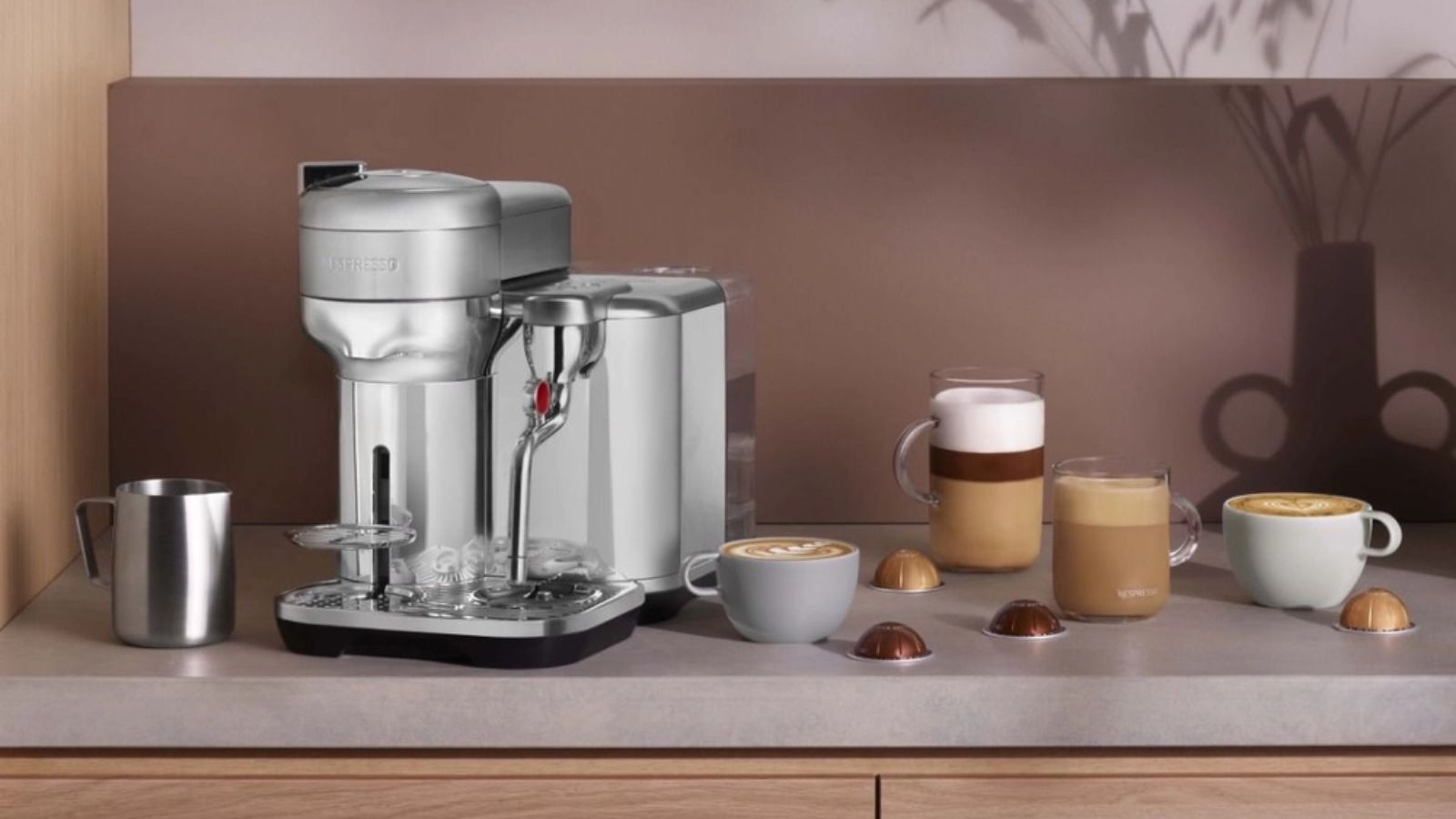 Nespresso vs espresso – tested for taste, cost, and technical differences
Nespresso vs espresso – tested for taste, cost, and technical differencesA barista offers some perspective on the Nespresso vs espresso debate. She's tested them for taste, and accounted for cost differences too
By Laura Honey Published
-
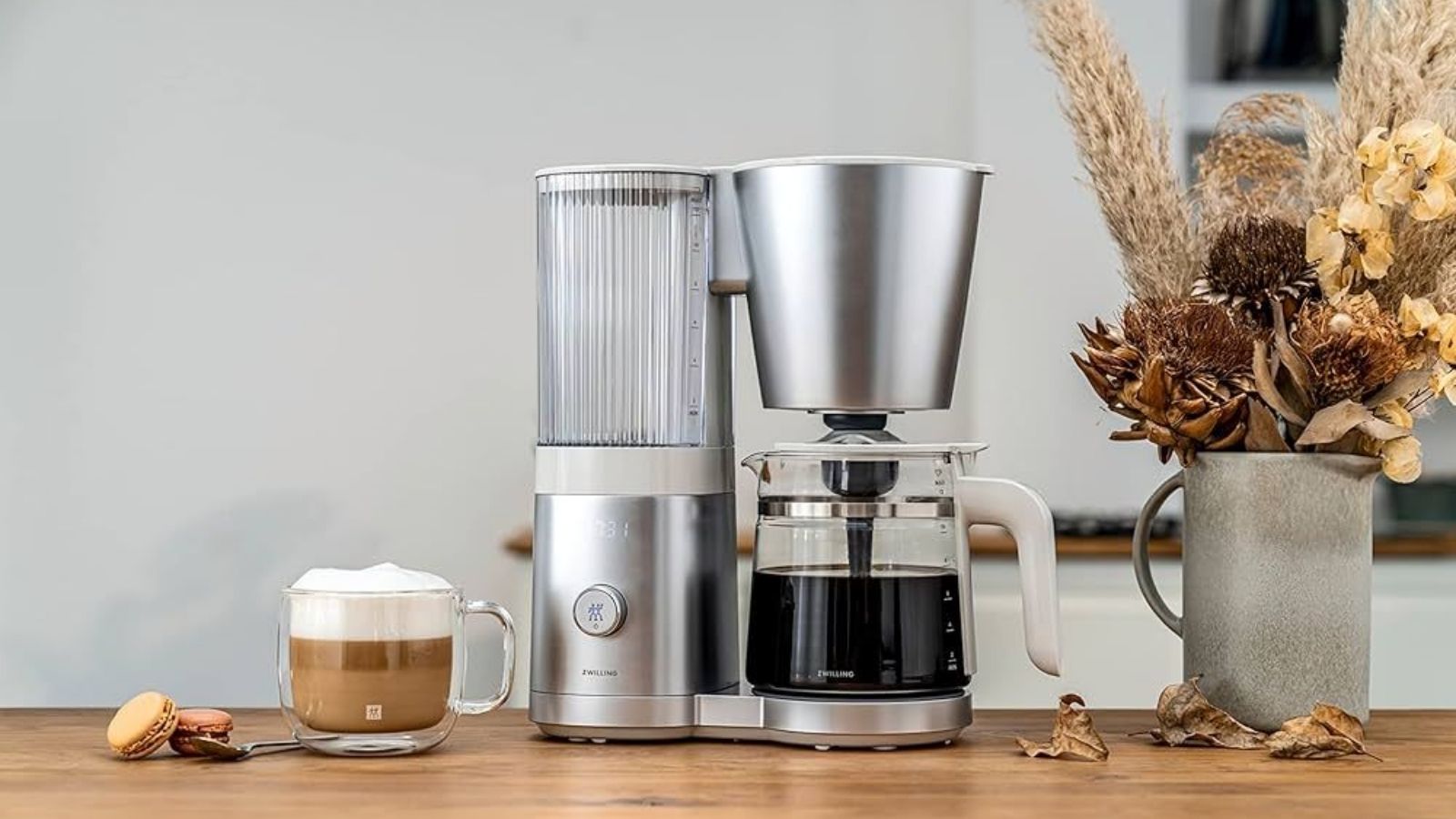 I just tested the best small drip coffee maker – and it's surprisingly stylish too
I just tested the best small drip coffee maker – and it's surprisingly stylish tooI've tested a range of filter coffee options and it turns out that the best small drip coffee maker is beautiful, sleek, and smart too
By Laura Honey Published
-
 The best iced coffee makers – save hundreds by switching your favorite coffee shop drink to a delicious homemade one
The best iced coffee makers – save hundreds by switching your favorite coffee shop drink to a delicious homemade oneForget takeout iced coffee, these machines will keep you cool and caffeinated all day long
By Lydia Hayman Last updated
-
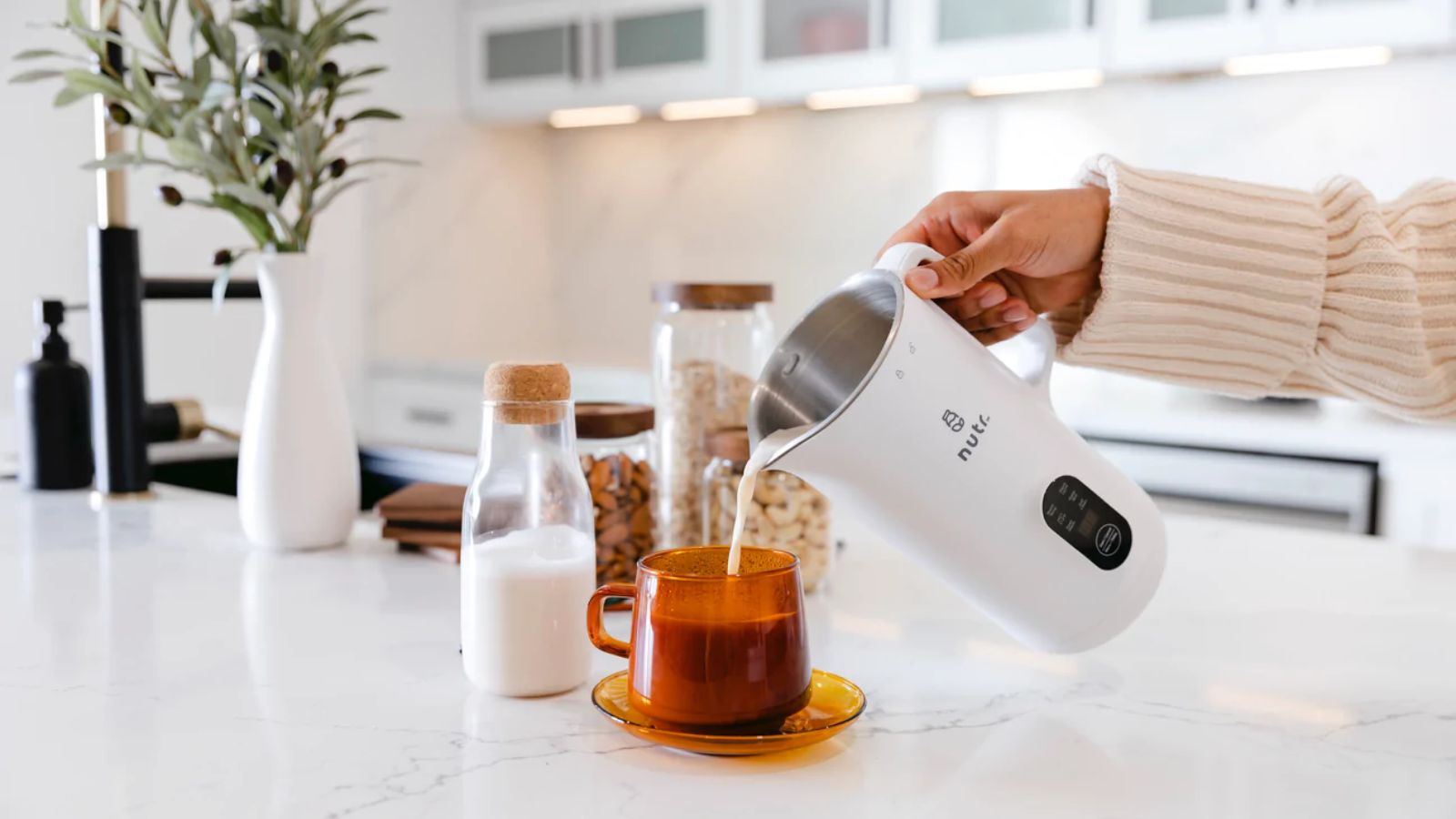 Best nut milk makers: tested by an expert vegan
Best nut milk makers: tested by an expert veganThese are the best nut milk makers for almond, oat, coconut milk and more. Our expert vegan barista tested them to see which is best
By Laura Honey Published
-
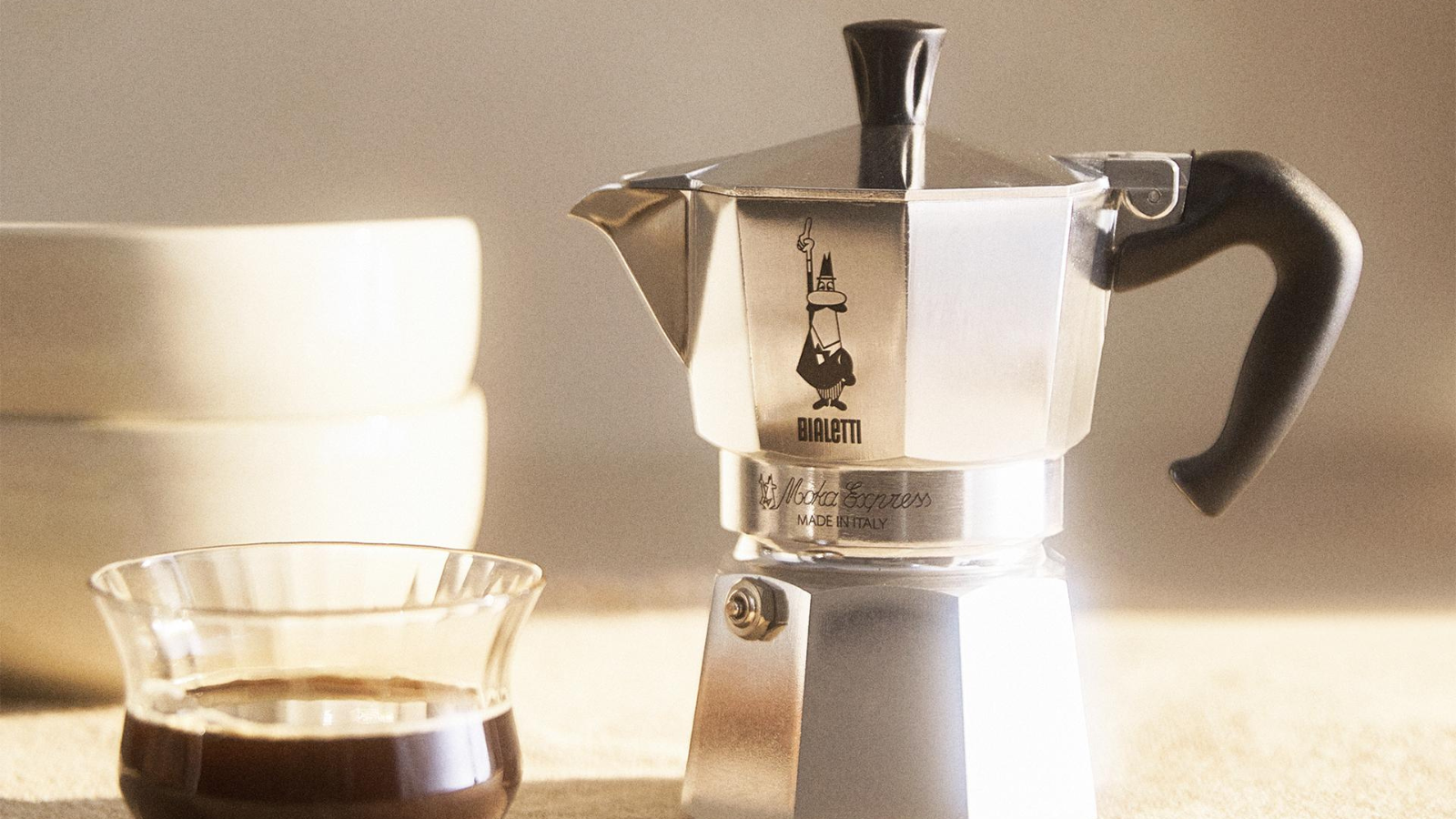 The best moka pots for easy Italian-style coffee straight from your stovetop
The best moka pots for easy Italian-style coffee straight from your stovetopOur tried-and-tested moka pots for brewing delicious coffee at home – the stylish, Italian way
By Lydia Hayman Last updated
-
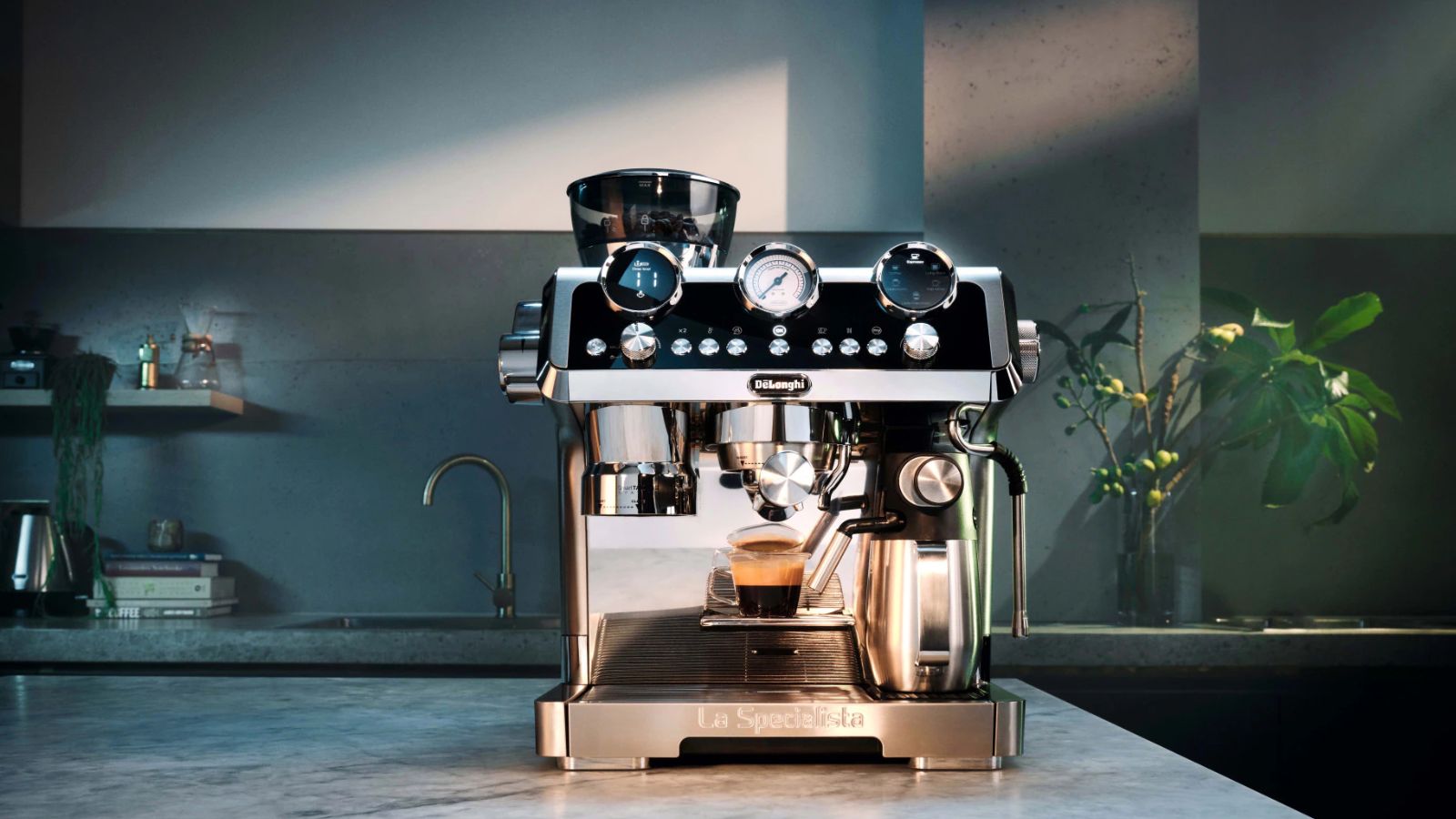 The best coffee makers with grinders for the freshest, most flavorful brews
The best coffee makers with grinders for the freshest, most flavorful brewsFrom luxurious espresso machines to tiny drip coffee makers, these are the best coffee makers with integrated grinders
By Lydia Hayman Last updated
-
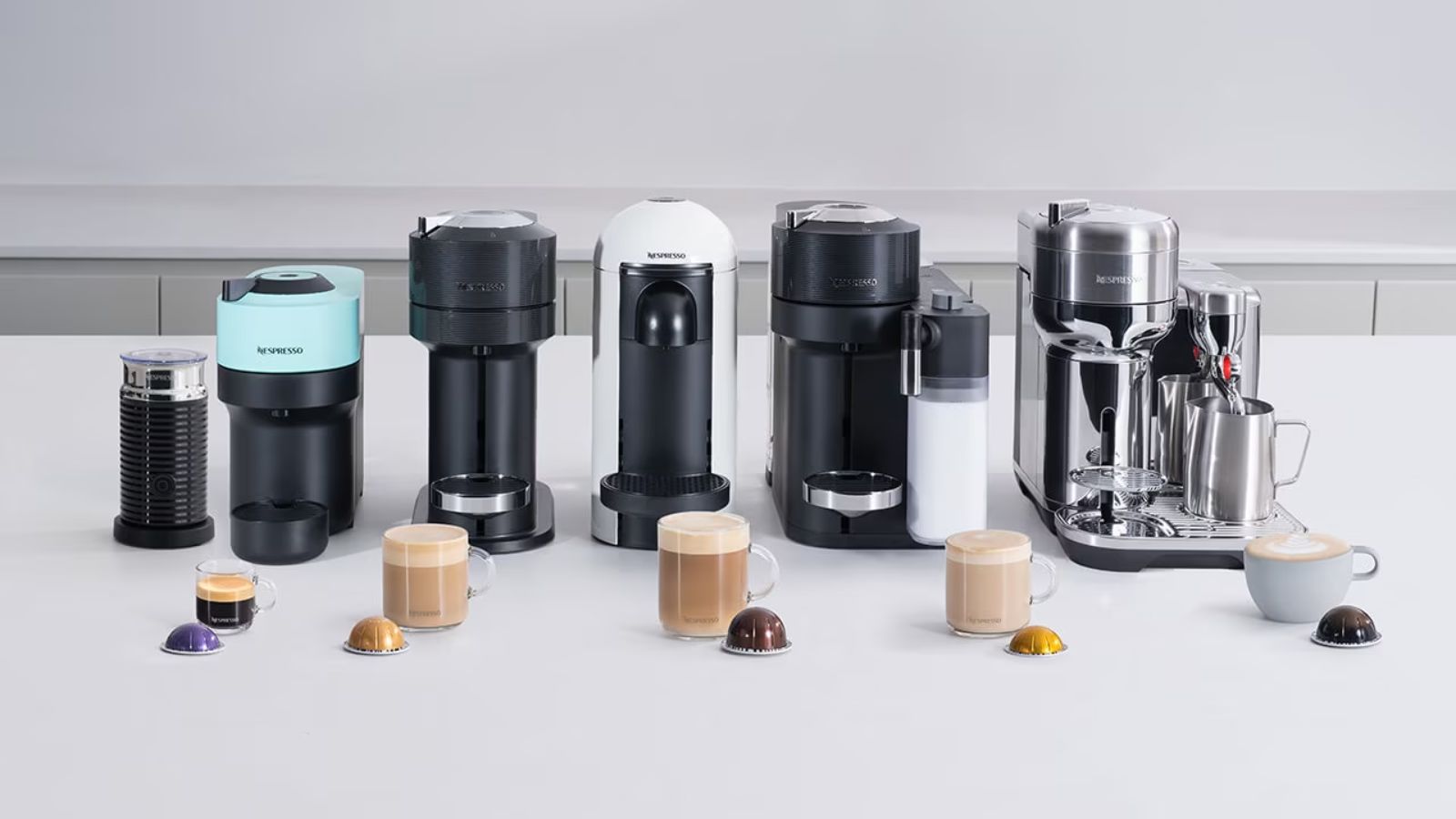 Best Nespresso machines – for every kind of coffee drinker
Best Nespresso machines – for every kind of coffee drinkerHow do you know whether you want the Lattissima or the Creatista, the Vertuo or the Original, and the Essenza or the Pop? We have the answers
By Laura Honey Last updated
-
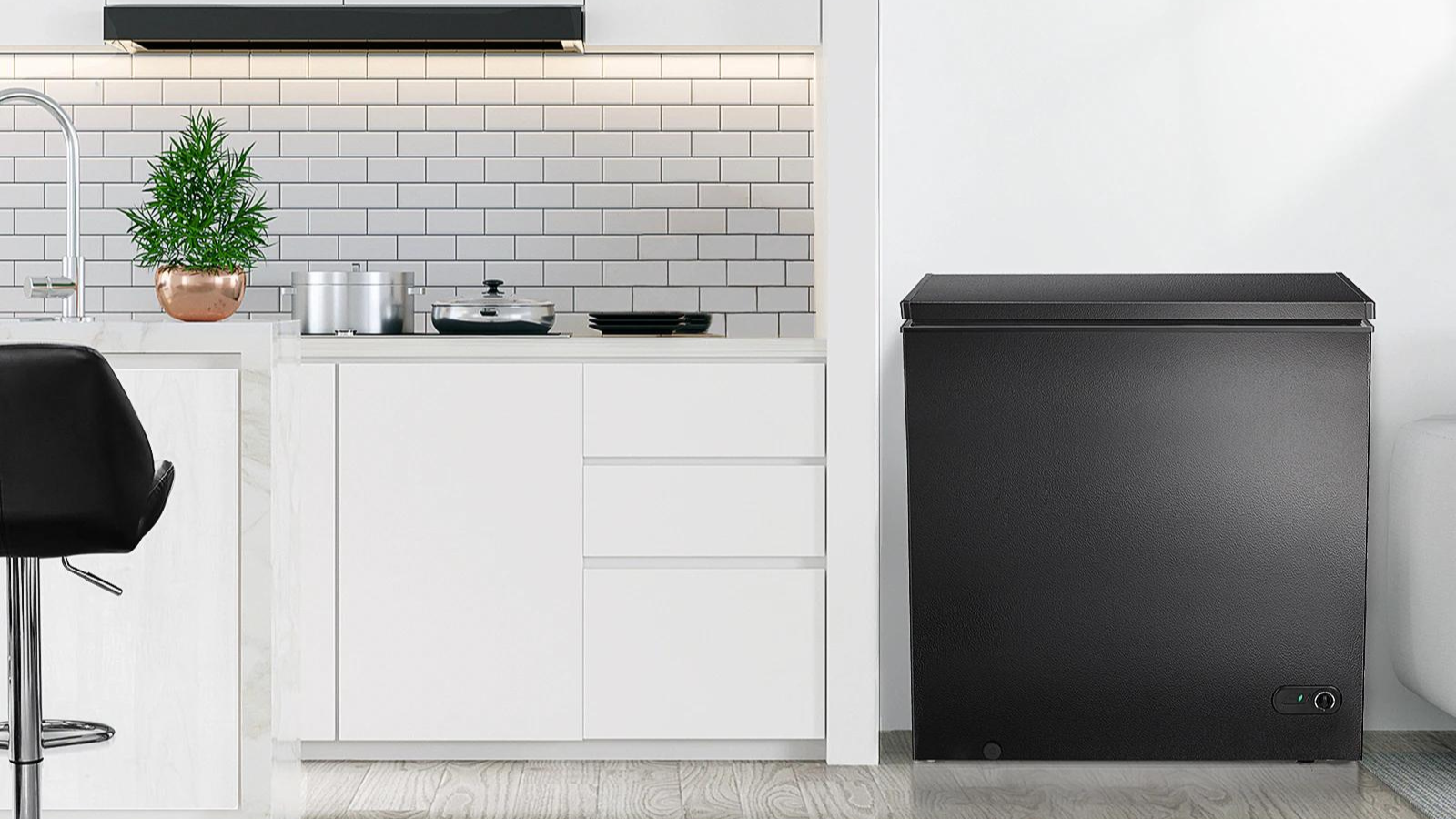 Best chest freezers: spacious, dependable, and practical
Best chest freezers: spacious, dependable, and practicalI've researched the best chest freezers on the market. From garage-friendly to enormous capacity, these are my top picks.
By Lydia Hayman Last updated